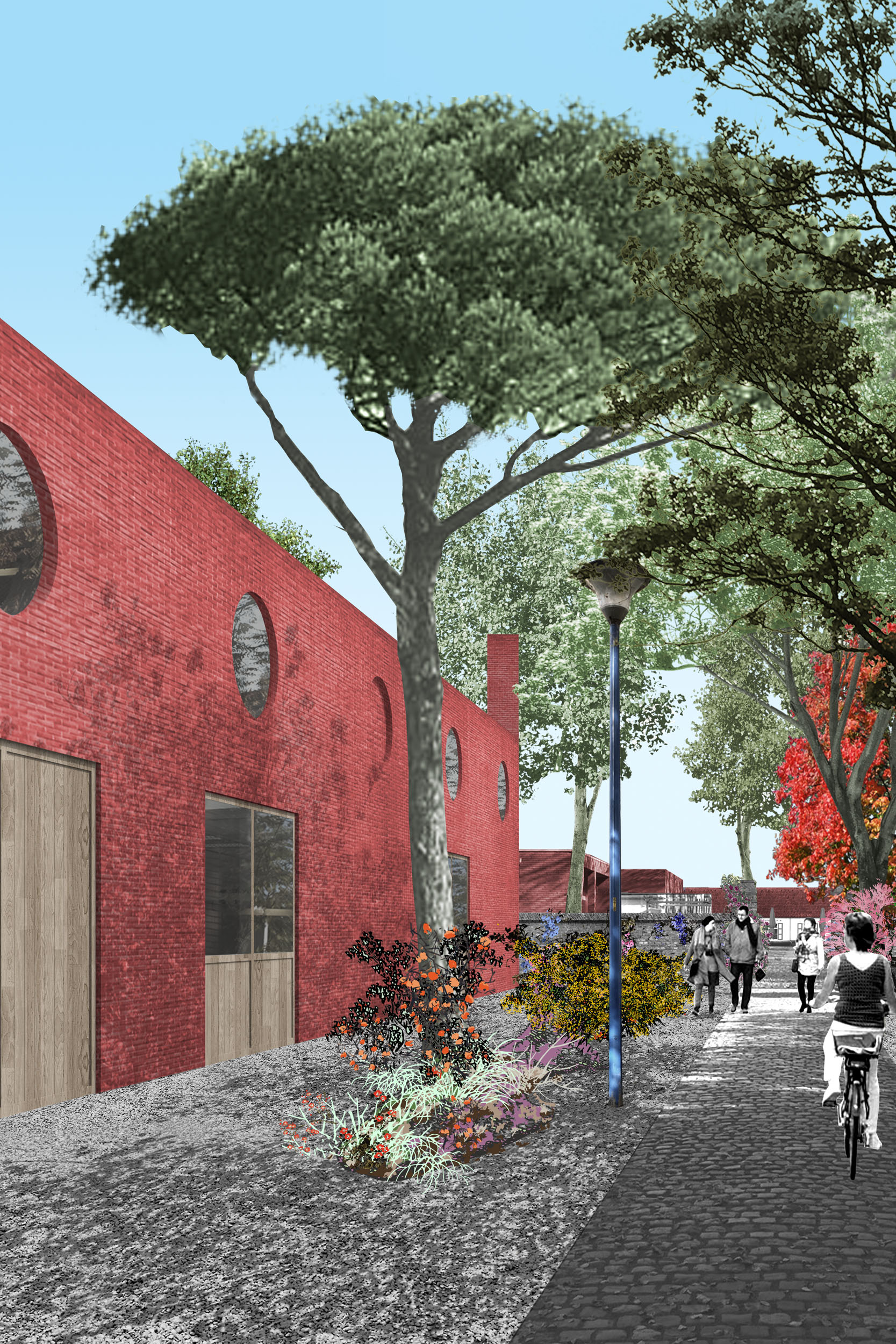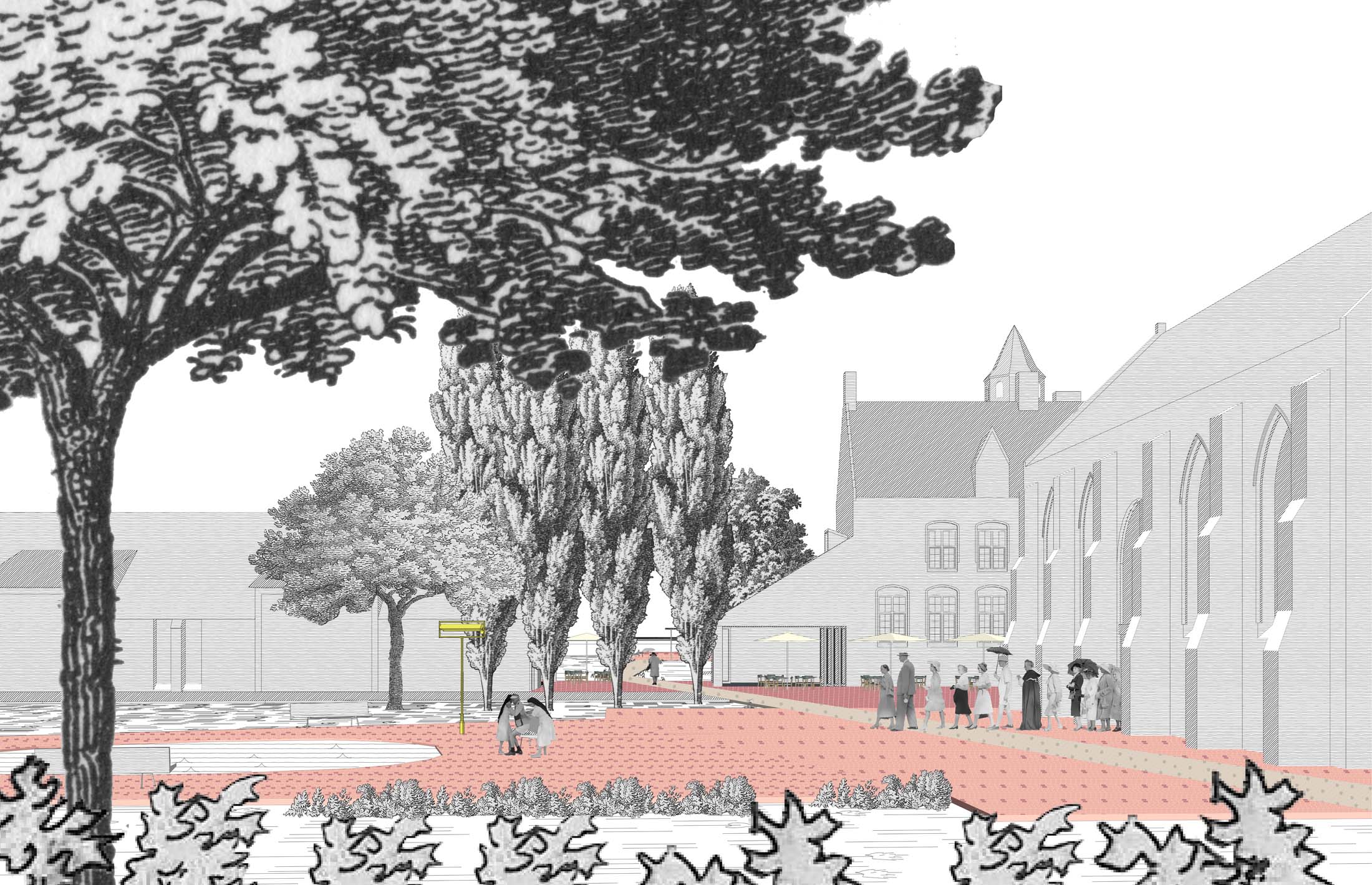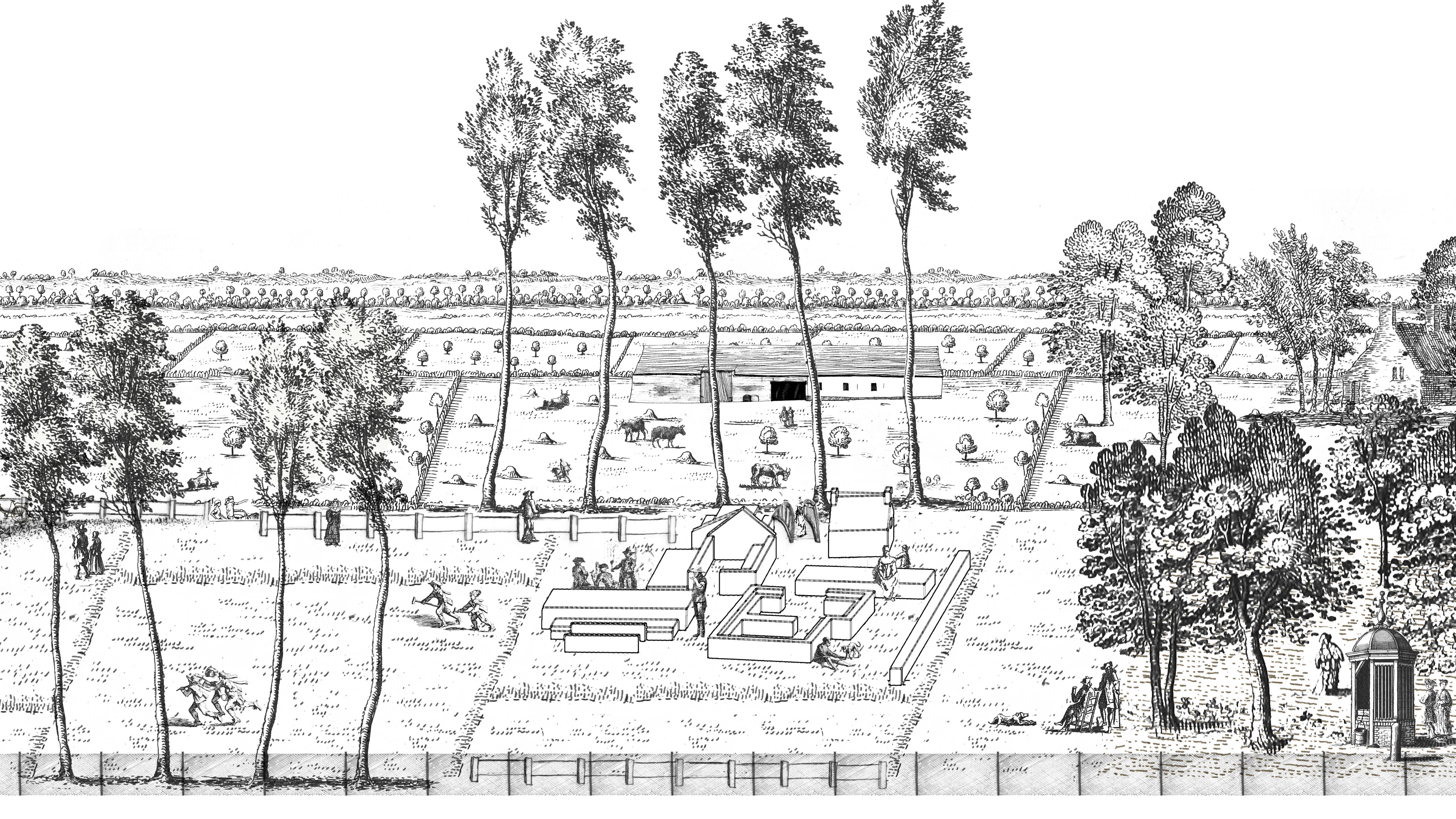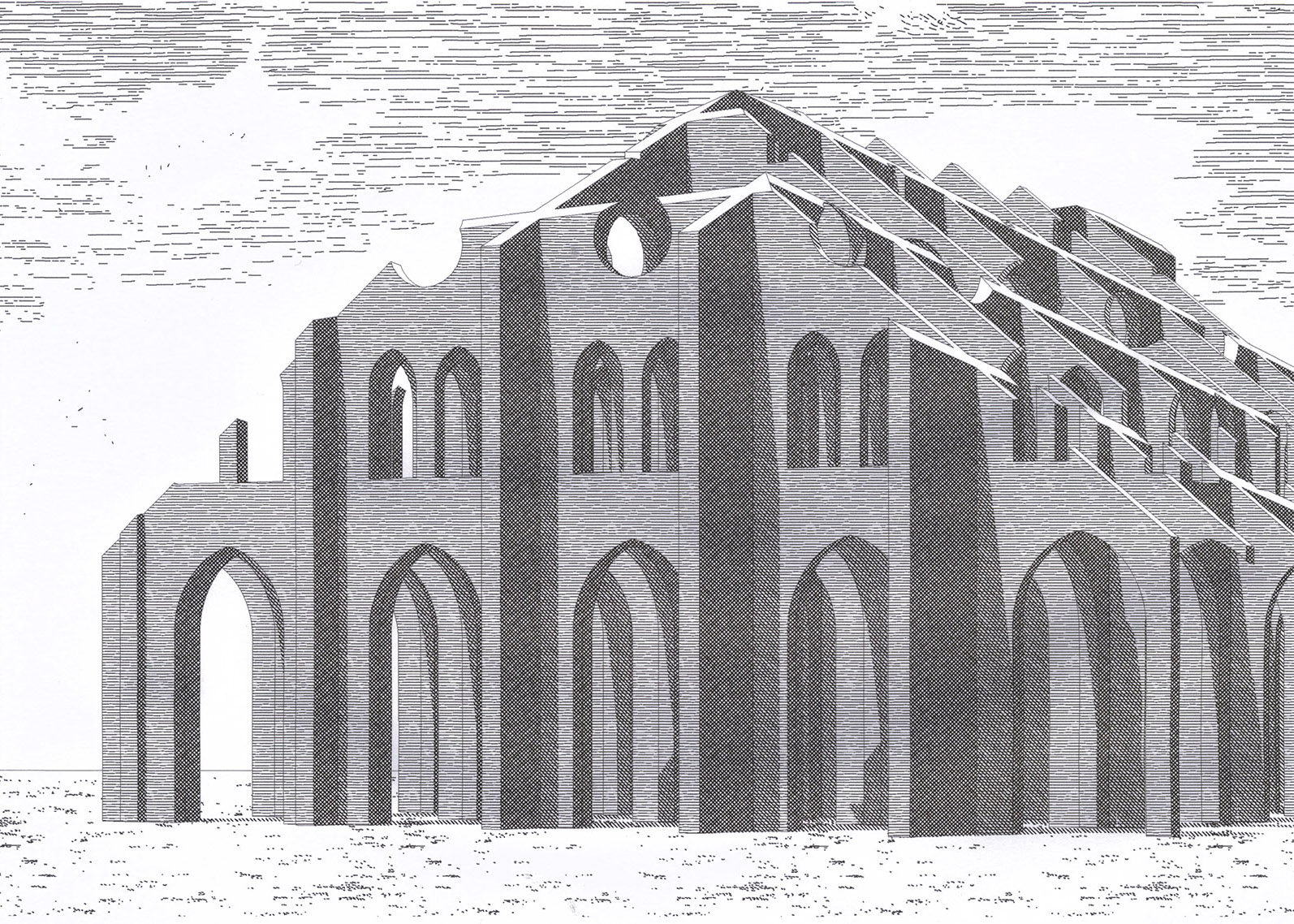POLDER TO PIXEL
Floriade, Almere, 2020
In the autumn of 2020, Veldwerk was asked by the city of Almere to participate in a competition for a floating art pavilion at the centre of the newly built Floriade district. Programmed with the contrasting disciplines of digital media and land art, we found that it was this unexpected juxtaposition of disparate fields that would allow for a novel light to be cast on the whole.
![]()
![]()
![]()
![]()
![]()
![]()
![]()
![]()
Design for a floating art pavilion in Almere's Floriade district
The structure finds its place between the formal logic of a traditional farmers gebint and a modern abstract pavilion
Our proposed form finds its own space between the formal logics of a traditional farmers gebint and a modern abstract pavilion. The traditional framing aligns itself with fleeting modern walls, at moments becoming one and the same, and at moments remaining their own. The frames, the walls and the lazy roof share a thickness, material and colour allowing them to complete each others’ thoughts.
The pavilion offers two gallery spaces, a long terrace for open air display and a roof terrace cafe
As you move through the pavilion it seems to change its story at every turn. Entering under a low hanging barn roof which floats above the water, a windowed facade reveals itself and leads to the entrance area, ticket office, wardrobe and, on the floor above, the employee offices. The two exhibition halls shift between being a formal and a subjective space. At each opening, the traditional framing finds a new role as a figurative abstract element along which you look or move out. A long terrace lining the front facade allows for open air displays and can be used to extend the gallery space outward. A climb towards the roof is accompanied by a series of white framed windows, each looking through the other interior spaces and outward. On the roof a terrace cafe reveals itself looking out to Almere’s city centre in the distance.
High gloss wooden walls painted green and lined with bright red edges serve as a wrapping for this ambiguous pavilion. A grid of darker green squares, ignoring any conventions introduced by the spatial design, run along the surface meeting specific moments of the underlying topology by mere accident. As part of the same pattern, a series of lightbulbs can be used as a primitive version of a dot-matrix display, finding its beauty through its limitation. The primitive bulbs also allow the pavilion to be carried through into the digital realm. The systematic placement of the lightbulbs enable for its shape to be understood within a space of augmented reality, allowing for a virtual artwork to be projected into our physical reality.
ARCHITECTURE: Veldwerk Architecten, Ghent
CLIENT: Municipality Almere
LOCATION: Almere, the Netherlands
YEAR: 2020
BUDGET: € 800 000,-
STATUS: Closed competition, runner-up
VELDWERK TEAM: Marius Grootveld, Leander Ostgathe, Margot De Caster, Laura Steenbeke, Mascha Creutz














